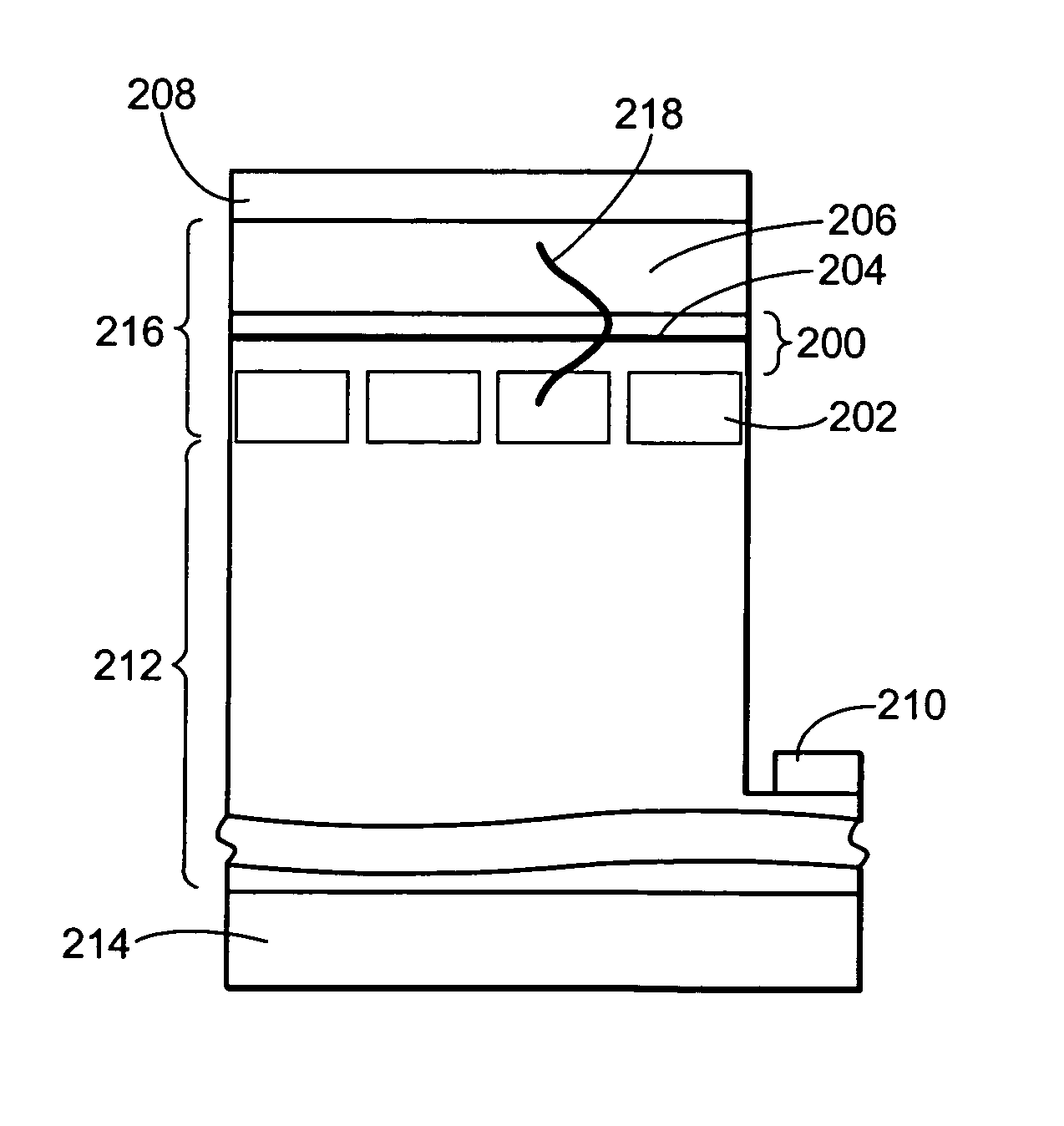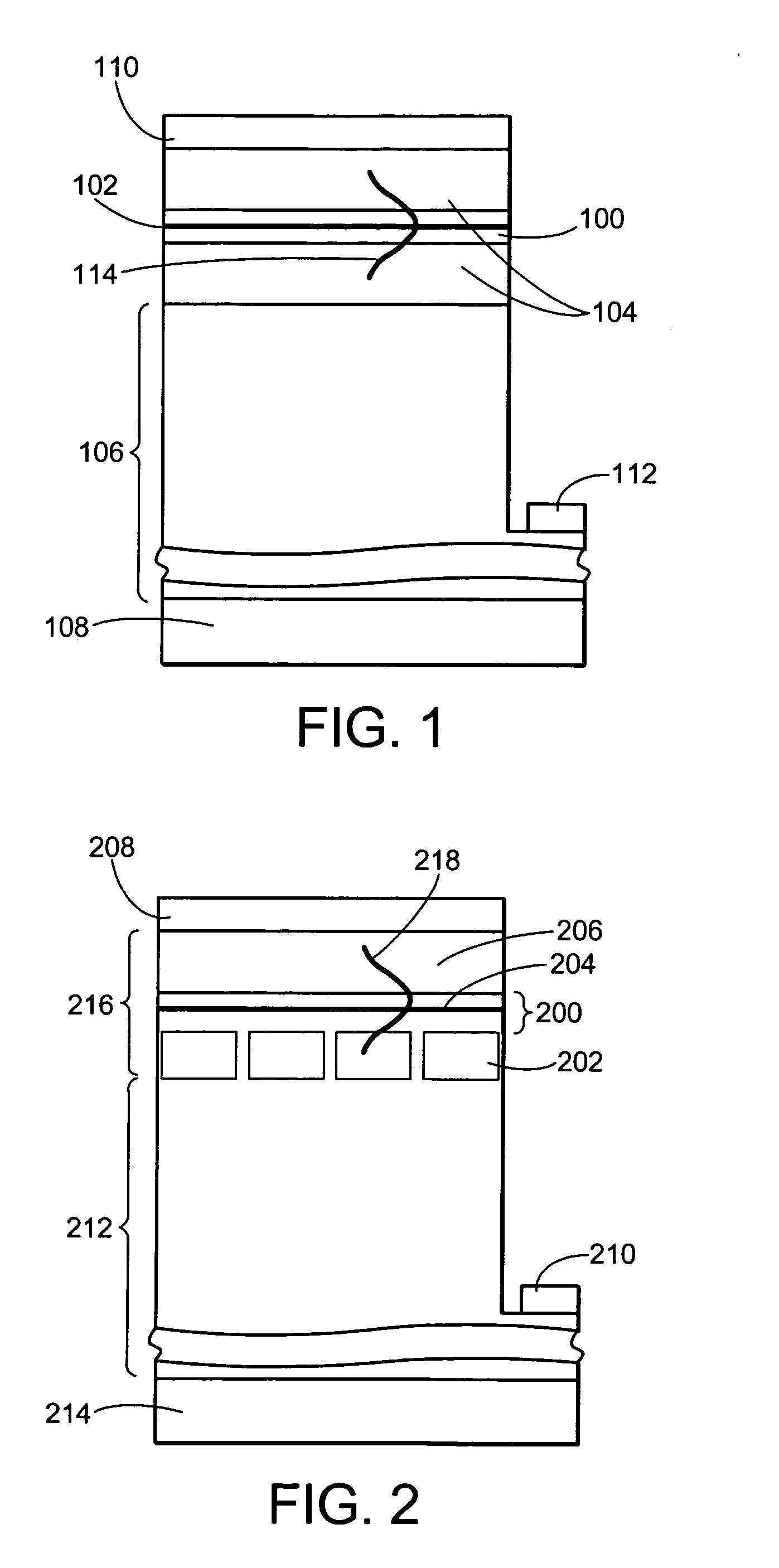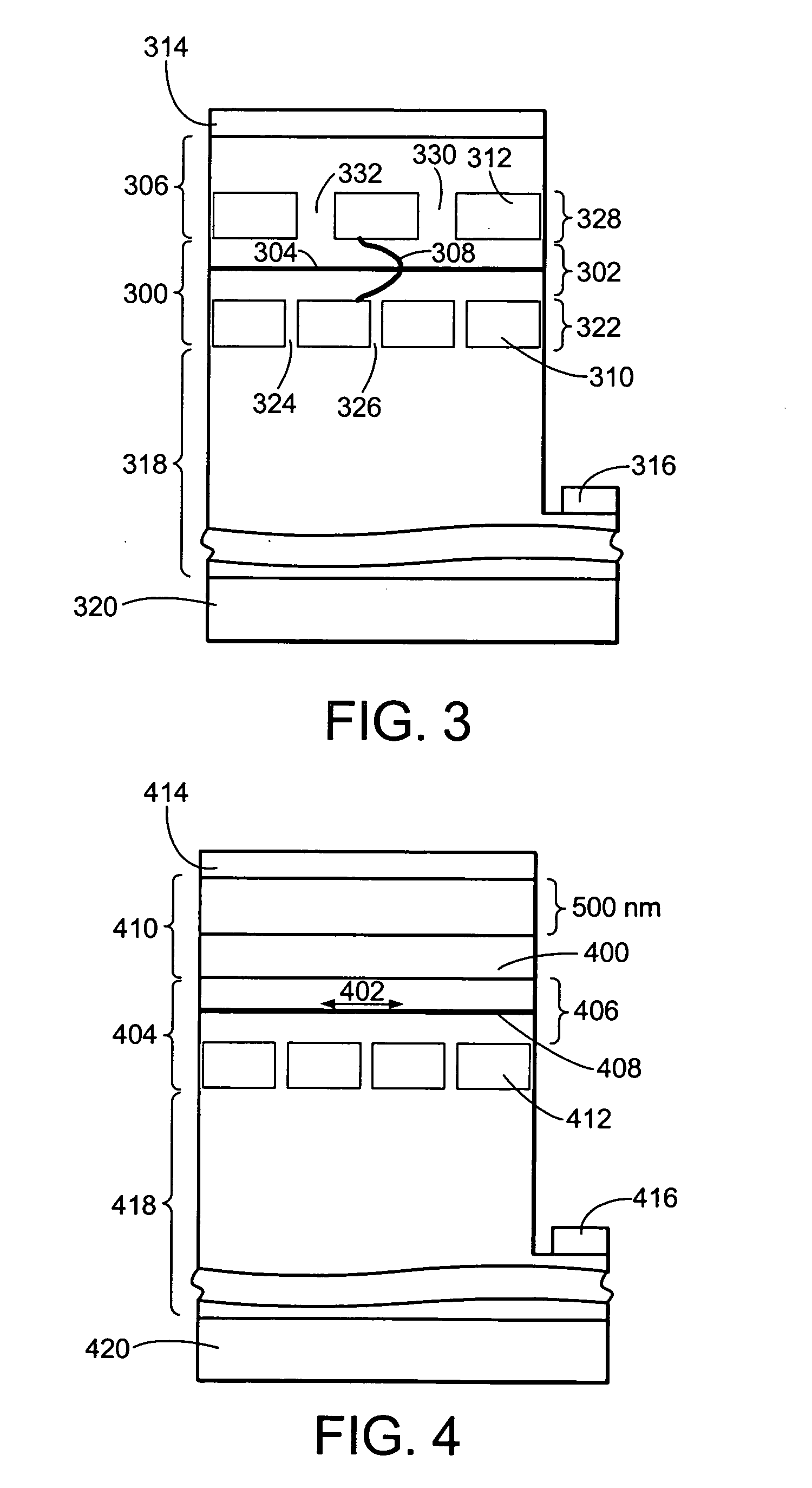Horizontal emitting, vertical emitting, beam shaped, distributed feedback (DFB) lasers fabricated by growth over a patterned substrate with multiple overgrowth
a technology of patterned substrates and lasers, applied in semiconductor lasers, instruments, optical elements, etc., can solve the problems of difficult manufacturing of nitride lasers, difficult cleavage, and difficult vcsels, and achieve the effect of improving the lasing mirror properties
- Summary
- Abstract
- Description
- Claims
- Application Information
AI Technical Summary
Benefits of technology
Problems solved by technology
Method used
Image
Examples
Embodiment Construction
[0071] In the following description of the preferred embodiment, reference is made to the accompanying drawings that form a part hereof, and in which is shown by way of illustration a specific embodiment in which the invention may be practiced. It is to be understood that other embodiments may be utilized and structural changes may be made without departing from the scope of the present invention.
[0072] Overview
[0073] The present invention relates to improving semiconductor lasers incorporating buried grating mirrors and photonic crystals, and more particularly, to new structures grown on substrates patterned by these gratings and photonic crystals. Specifically, the present invention describes new laser structures with improved contact structures and reduced waveguiding loss by contact electrodes, wherein these laser structures rely on active layers directly grown on patterned substrates with multiple Lateral Epitaxial Overgrowth (LEO).
[0074] Similar to the structures described ...
PUM
 Login to View More
Login to View More Abstract
Description
Claims
Application Information
 Login to View More
Login to View More - R&D
- Intellectual Property
- Life Sciences
- Materials
- Tech Scout
- Unparalleled Data Quality
- Higher Quality Content
- 60% Fewer Hallucinations
Browse by: Latest US Patents, China's latest patents, Technical Efficacy Thesaurus, Application Domain, Technology Topic, Popular Technical Reports.
© 2025 PatSnap. All rights reserved.Legal|Privacy policy|Modern Slavery Act Transparency Statement|Sitemap|About US| Contact US: help@patsnap.com



